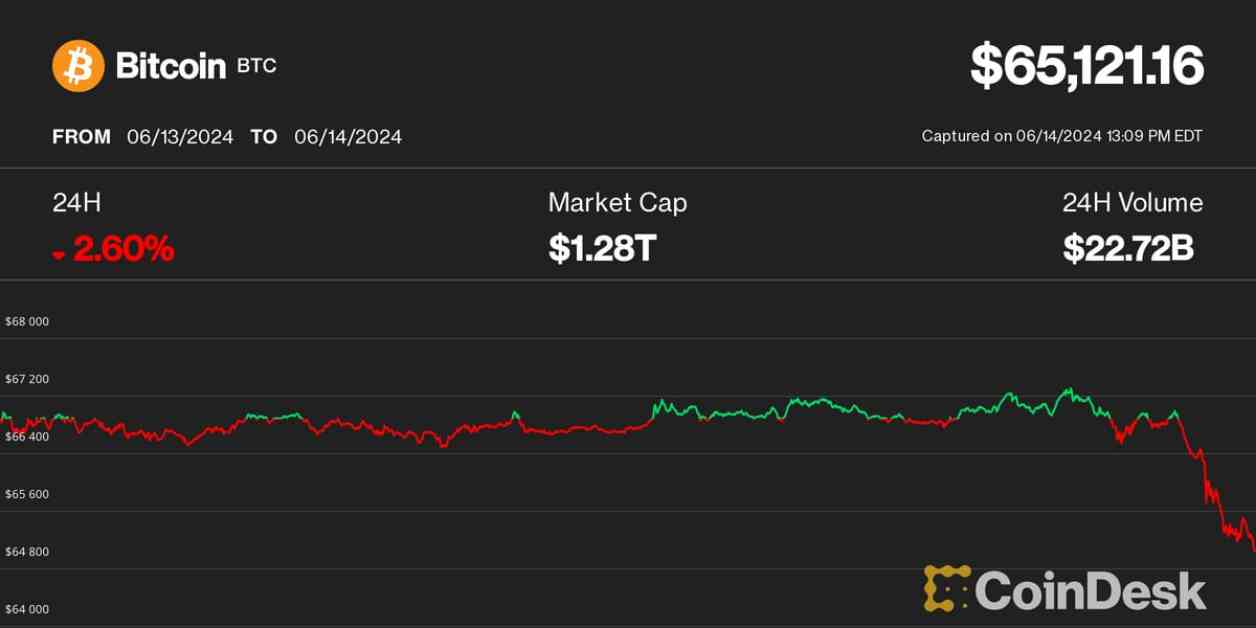Bitcoin’s price took a sharp dip this week, falling to $65,100 from around $67,000 during the U.S. trading session. This represents a 7.5% decrease over the past seven days, marking the lowest price for Bitcoin in four weeks. The broader crypto market also saw significant losses, with smaller cryptocurrencies experiencing even steeper declines. For example, Ether (ETH) dropped to $3,400, losing over 10% of its value in the same period.
Other altcoins like Solana (SOL), Avalanche (AVAX), Cardano (ADA), and Near (NEAR) also saw substantial losses ranging from 15% to 20%, according to CoinGecko data. The overall market sentiment turned bearish as leveraged derivatives trading positions worth nearly $180 million were liquidated in the past 24 hours across all crypto assets, with a total of over $870 million in liquidations for the week.
Many analysts and investors were optimistic about a potential price breakout for Bitcoin, expecting new record highs due to lower inflation and softer economic data. However, these expectations were quickly dashed as selling pressure intensified, keeping Bitcoin range-bound. The Federal Reserve’s projection of only one rate cut for the year, along with political uncertainty in Europe, contributed to the negative sentiment in the market.
Additionally, increased selling from miners and profit-taking from long-term holders near the $70,000 mark further weighed on Bitcoin and the broader crypto market. The sudden downturn in prices highlighted the volatility and unpredictability of the cryptocurrency market, reminding investors of the risks involved in trading digital assets.
As the market continues to navigate through these turbulent times, it is essential for investors to stay informed, exercise caution, and diversify their portfolios to mitigate potential losses. Keeping a long-term perspective and focusing on the underlying technology and fundamentals of cryptocurrencies can help investors weather the storm and seize opportunities when market conditions improve.














